After one of the mildest and wettest winters on record, we have had one of the driest springs. This week, the switch flipped to “summer” and with the increasing heat and humidity, we can perhaps hope for a thunderstorm or two.
Here is some of what is growing and flowering in the greenhouse and garden this week.
1. Medinilla ‘Royal Intenz’
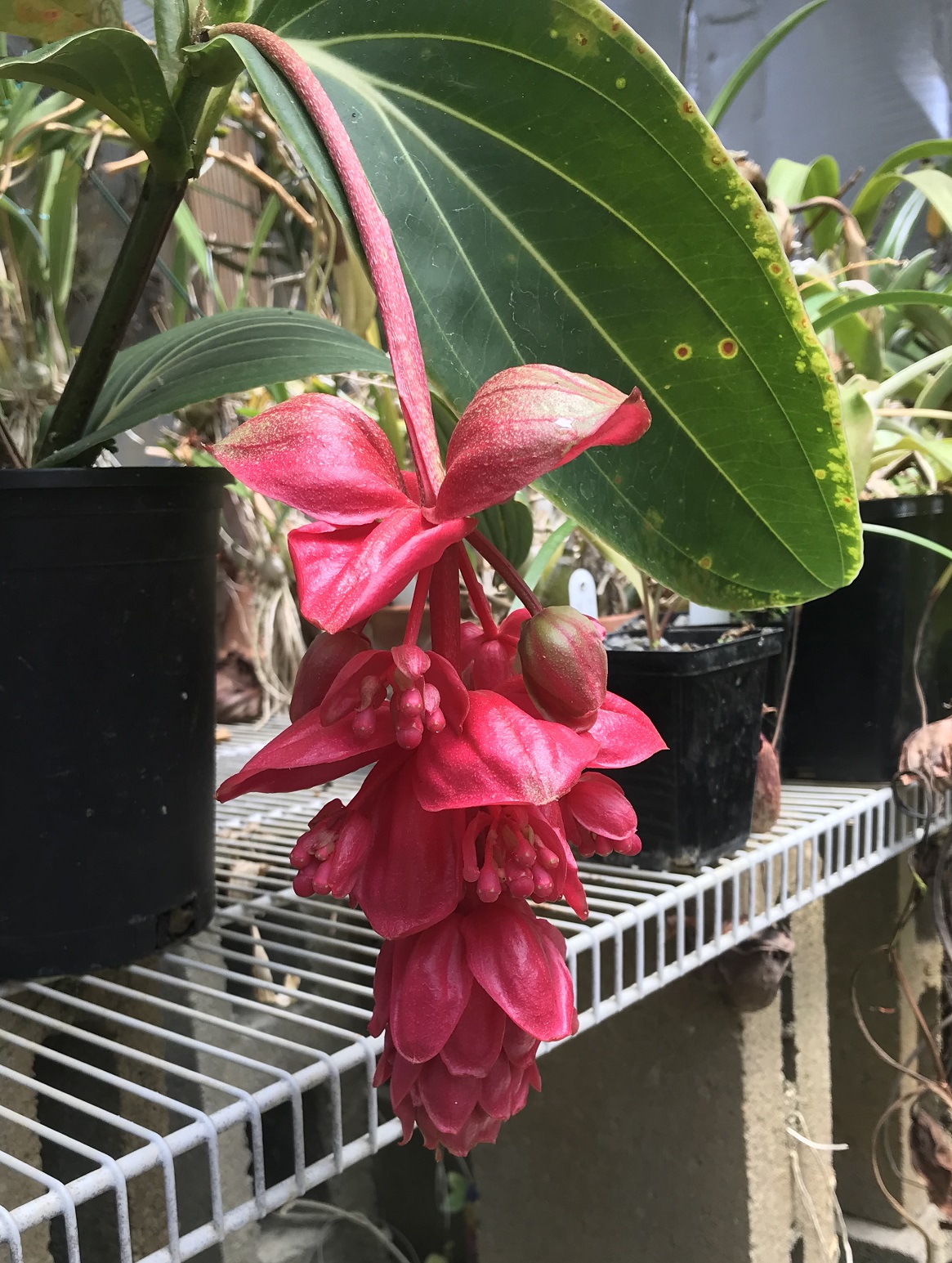
Beautiful plant, silly name. This new cultivar is apparently a hybrid, but it’s not clear what species are in its background. Definitely Medinilla magnifica, because M. ‘Royal Intenz’ looks rather like a very intensely colored, compact M. magnifica. The abstract of the plant patent simply refers to its parents by ID number, not species or cultivar names, and there doesn’t seem to be any way for me to find out exactly what I am growing. It’s somewhat annoying.
In any event, M. magnifica and related species–and by extension M. ‘Royal Intenz’–are epiphytic shrubs from the Philippines which adapt well to cultivation in a warm greenhouse or bright, humid windowsill. Logee’s offered M. ‘Royal Intenz’ briefly last year, and I’m glad I got an order in before they sold out.
I’m starting to see some fungal spotting on the foliage, perhaps due to water dripping from overhead Nepenthes plants. I think it’s time to move it to a brighter and drier spot in the greenhouse, or perhaps outside for the summer.
2. Pearcea rhodotricha
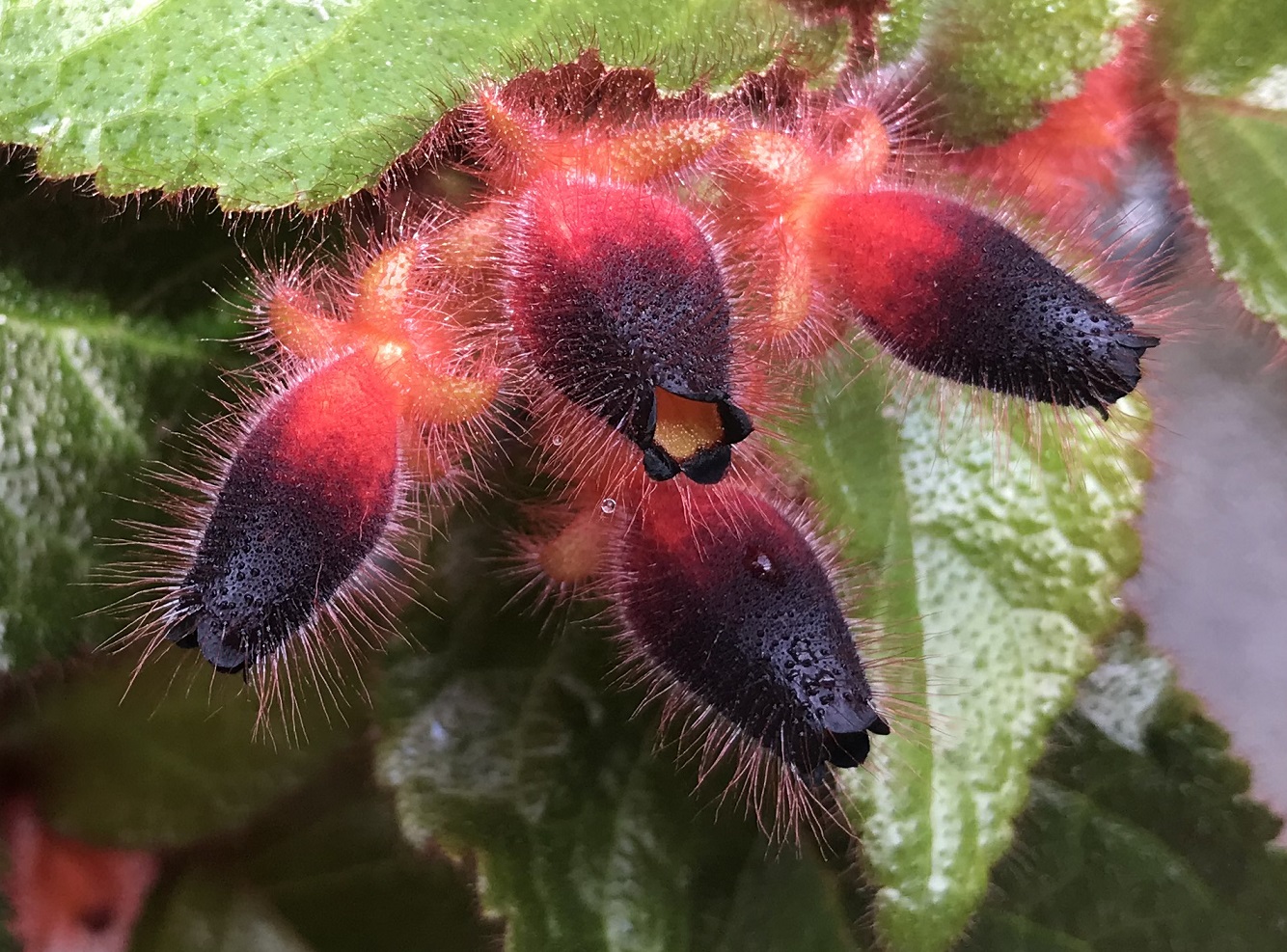
Pearcea rhodotricha is a gesneriad from Ecuador with flowers that are probably the closest that I have ever seen to true black. Adding to its overall bizarre appearance, the stems and undersides of the leaves are densely covered with red hairs (hence “rhodotricha”) not unlike those of a tarantula.
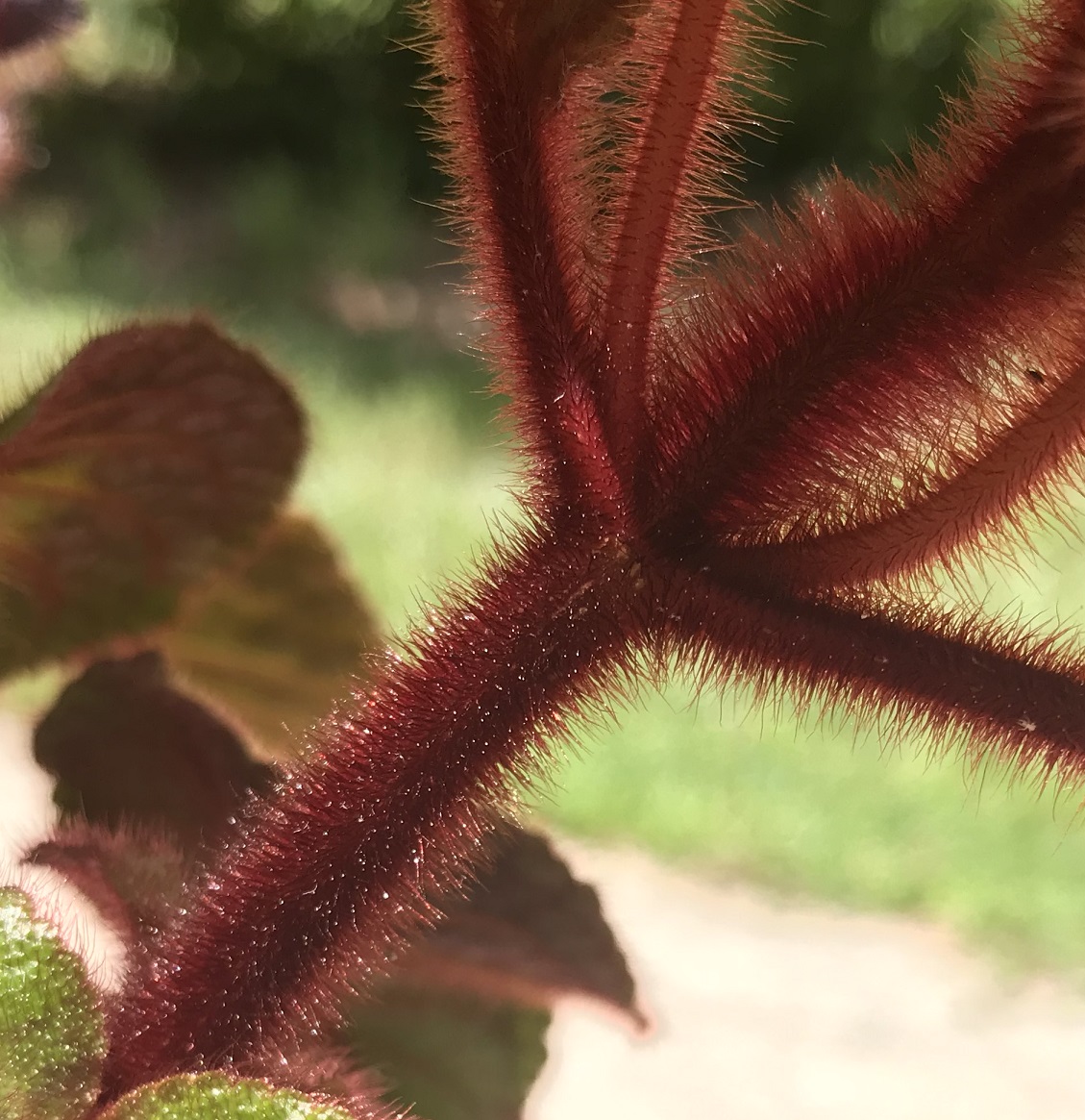
3. Corytoplectus cutucuensis
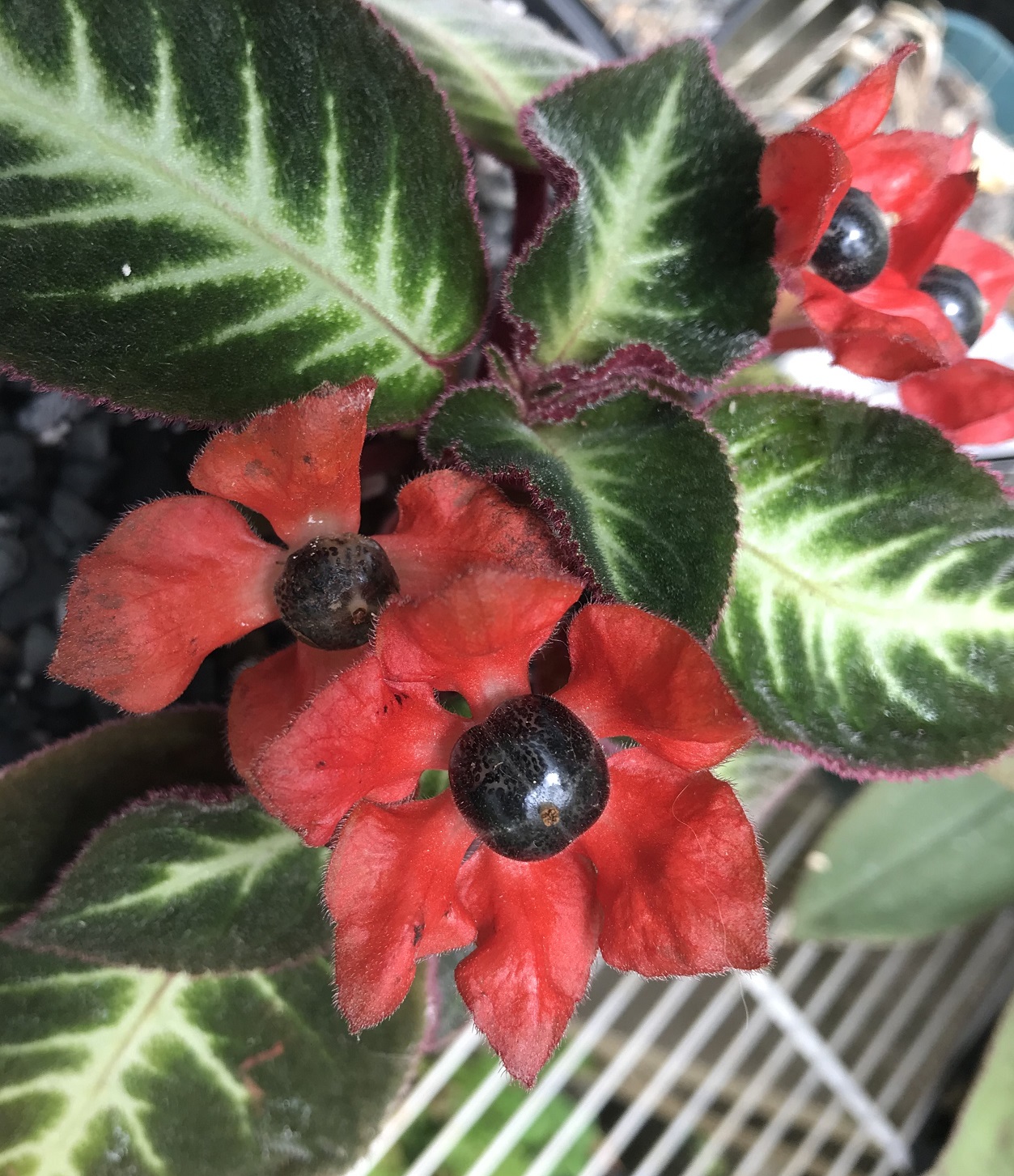
Another Ecuadorean gesneriad, Corytoplectus cutucuensis has insignificant yellowish flowers. It’s the shiny black berries, sitting within long-lasting red bracts, and the beautifully variegated foliage that make it worth growing. Both this species and the previous are easy to grow from cuttings and appreciate a shady humid environment.
4. Encyclia Gail Nakagaki
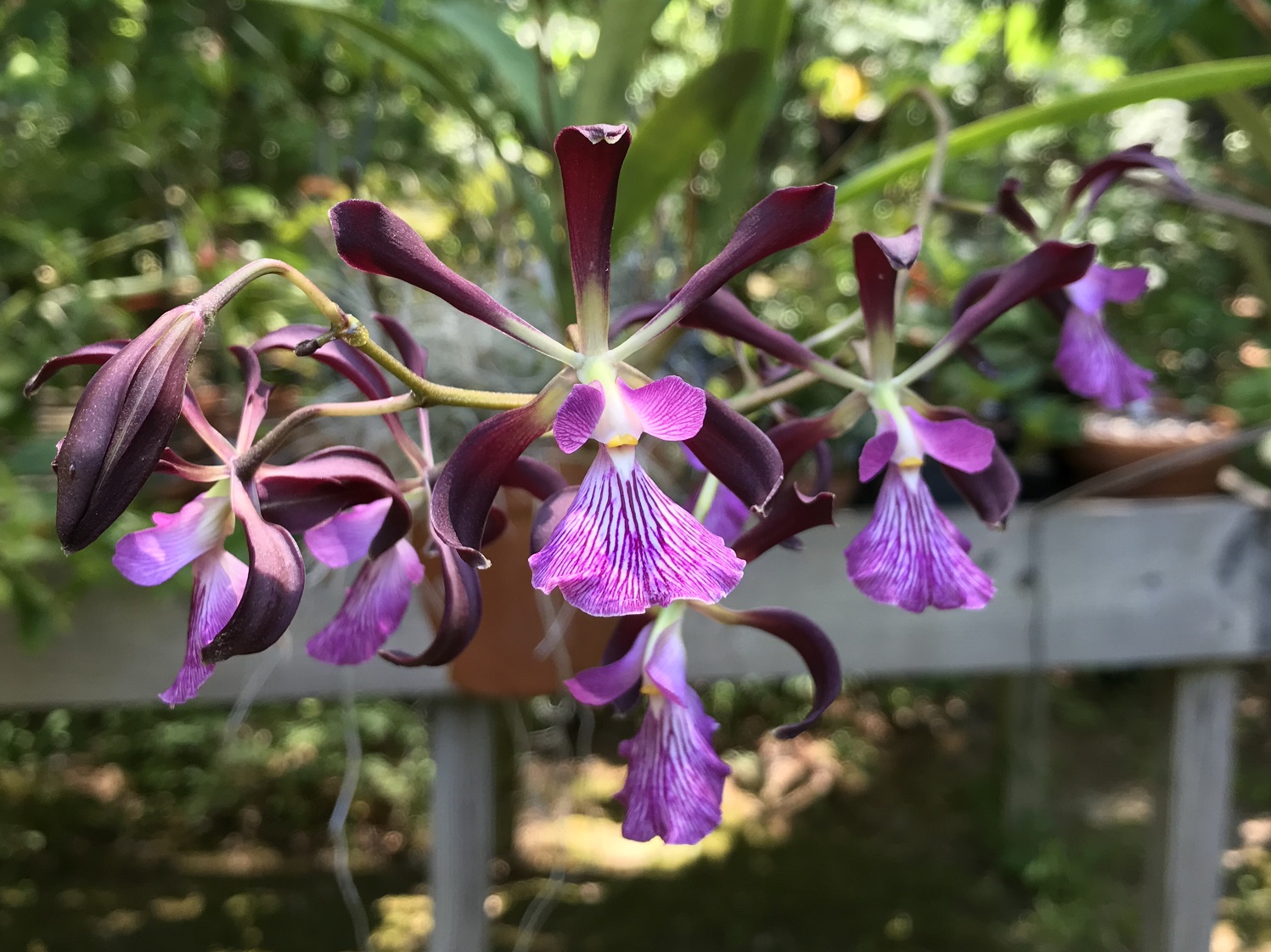
Encyclia Gail Nakagaki is Encyclia cordigera x Encyclia alata (see below), and you can clearly see its parentage in its flowers. E. cordigera var. rosea gives the beautiful purple color and hooked tepals while E. alata contributes the striped lip and pale tepal bases. The fragrance of this orchid hybrid is fantastic.
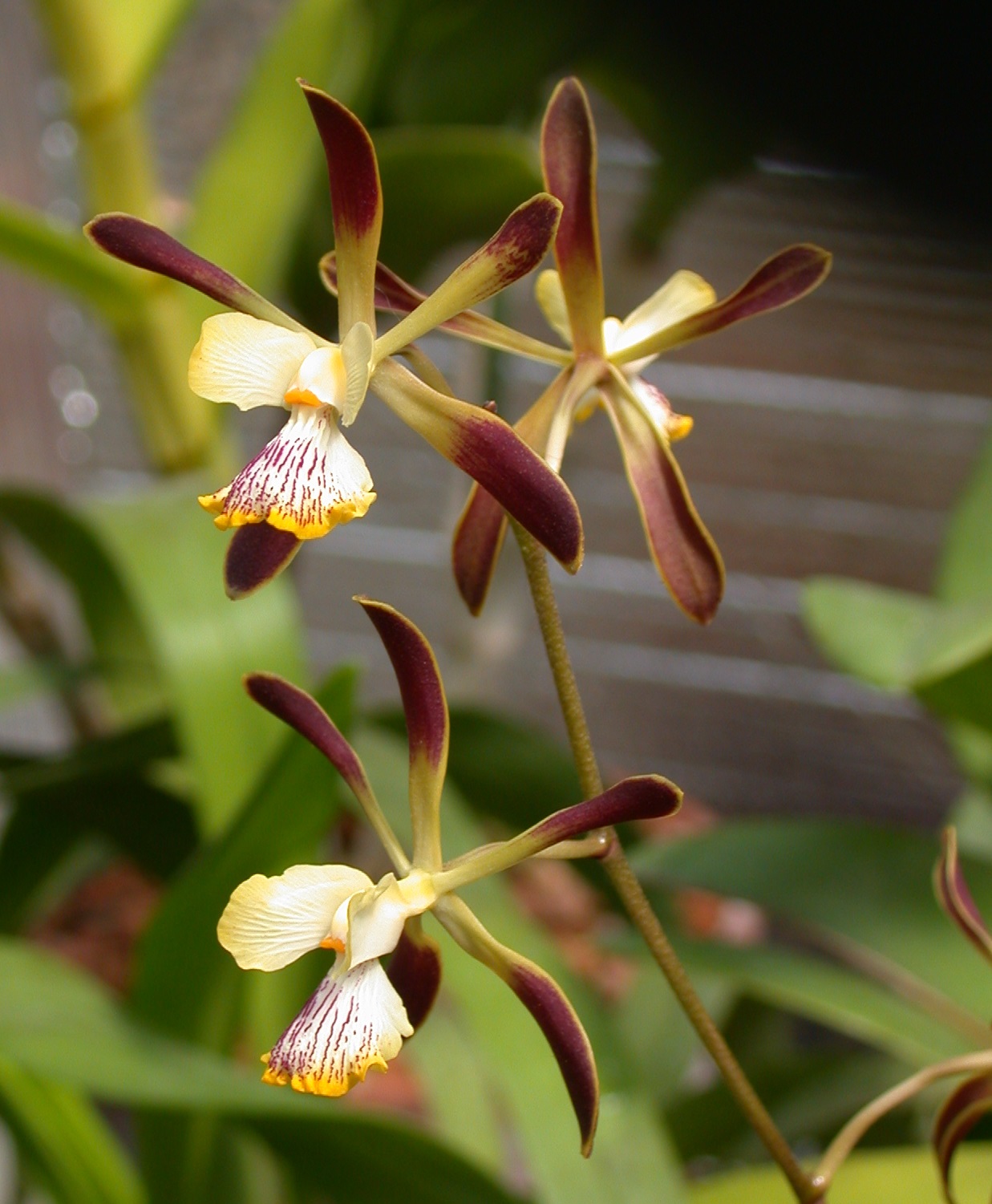
5. Tradescantia ‘Osprey’ (hybrid spiderwort)

I suppose I ought to have at least one outdoor flower in my Six. ‘Osprey’ is a Tradescantia x Andersonia cultivar, but its pastel flowers are much more restful than the hot color of ‘Sweet Kate’ or ‘Concord Grape’ (see photos 2 and 3 of Six on Saturday #44). For some reason, it isn’t readily available at local nurseries, and I had to mail order this plant. It has doubled its size in a year, so maybe it will be large enough to divide and spread around the garden this autumn.
6. Ipomoea batatis (sweet potato)
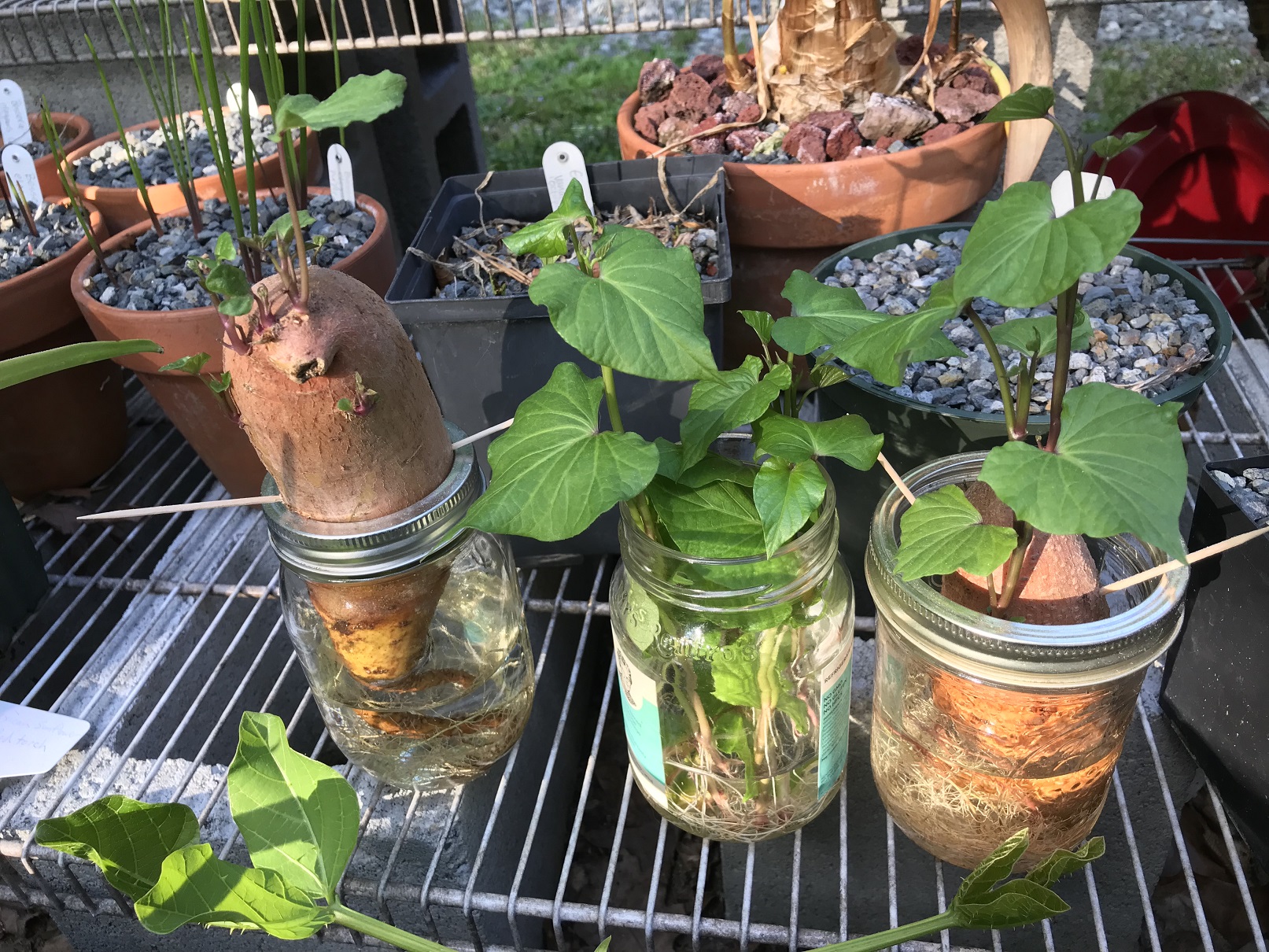
Slips from some ‘Beauregard’ sweet potatoes that we grew last year are almost ready for planting. Once the slips are about four inches long, I break them off the tuber and put them in a jar of water. They root in a few days. I only sprouted a couple of tubers for fun, but now I wish I had started more. For some reason, I haven’t been able to find slips in local garden centers yet this year.
The Propagator is the host of Six on Saturday. Head over there to see his Six for this week and find links to the blogs of other participants.

I do exactly like you do with the sweet potatoes, which amazes a lot of people here, but this rooting works. Mine are at about the same stage and I should be planting them in the ground soon.
It’s hard to find here too, except those we eat which are not expensive this year though.
Very nice choice of plants this week with many varieties still unknown to me: your photos are superb !
LikeLiked by 1 person
I was not aware that there are cultivars of spiderwort. I was intrigued by a plant that mysteriously appeared at work, . . . just before a colleague suddenly removed and destroyed it. He explained that it has potential to become an invasive weed here, like it is in other regions where it grows wild. I have encountered it only a few times, in other regions, and noticed that it bloomed either a rich deep blue, or a rich deep purplish burgundy. I liked the color of the bloom, but will not likely ever grow it, even if I encounter it again in the future.
LikeLiked by 1 person
I have also heard that it has the potential to be invasive, but so far I haven’t seen a single seedling. Fingers crossed.
LikeLiked by 1 person
I’ve never heard of 1 – 4 but what beautiful plants. Lovely to look at exotic plants while trying to ignore yet more rain. I’ll probably be complaining it’s too dry in a few weeks time😂
LikeLiked by 1 person